We will summarize the radio frequencies (bands) assigned to Japanese mobile network operators (MNOs: Mobile Network Operators) and explain them in an easy-to-understand manner using diagrams.
The radio frequencies used in 5G/4G/3G mobile phone communication services use a variety of different frequency bands. In addition, the bands used by mobile phone communication services for each frequency (from which exact frequency to which frequency) are precisely determined. The exact frequencies and their adjacency relationships are explained in an easy-to-understand diagram in this log post.
Japanese mobile network operators (MNOs) are the companies shown in the diagram below.
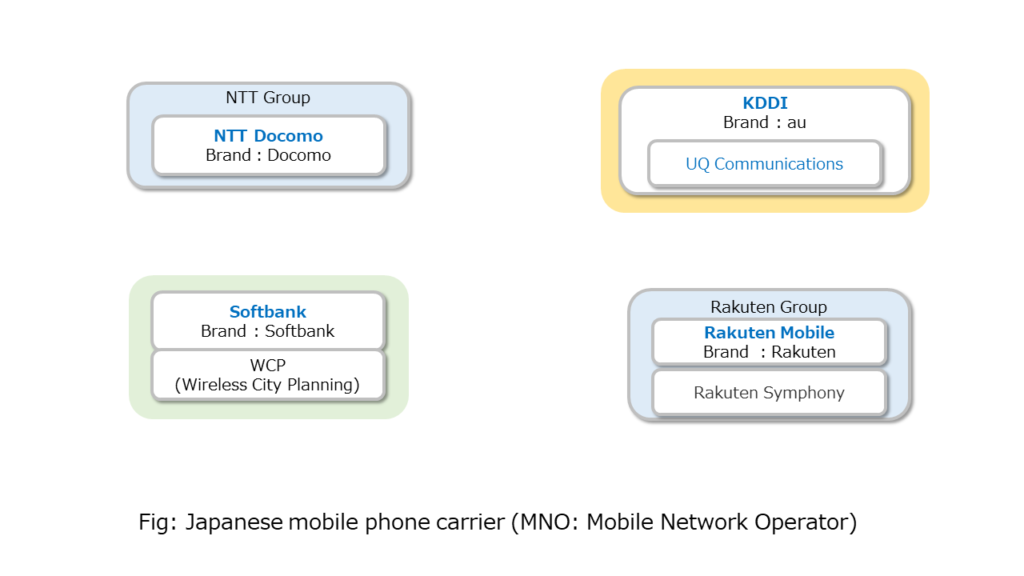
- Millimeter wave (n257: 28GHz band) frequency allocation status details
- Frequency allocation status details for Sub6 (n79: 4.5GHz band, n77/n78: 3.7GH band)
- Frequency allocation status details for Sub6 (Band 42: 3.5GHz band, Band 41: 2.5GHz band, Band 40: 2.3GHz band)
- Sub6 (band 42: 3.5GHz band, band 41: 2.5GHz band, band 40: 2.3GHz band) frequency allocation list (including WBA)
- Sub6 (band 42: 3.5GHz band) frequency allocation diagram
- Sub6 (band 41: 2.5GHz band) frequency allocation diagram (including WBA)
- Sub6 (band 40, n40: 2.3GHz band) frequency allocation diagram
- Frequency allocation status details for low band (band 1: 2.0GHz band, band 3/9: 1.7GHz band, band 21/11: 1.5GHz band)
- Frequency allocation status details for platinum band (band 8: 900MHz band, band 26/19: 800MHz band, band 28: 700MHz band)
- Frequency allocation list for platinum band (band 8: 900MHz band, band 26/19: 800MHz band, band 28: 700MHz band)
- Platinum band (band 8: 900MHz band, band 26/19/18: 800MHz band, band 28: 700MHz band) frequency allocation diagram
- Platinum band (band 8: 900MHz band) frequency allocation diagram
- Platinum band (band 26/19/18: 800MHz band) frequency allocation diagram
- Platinum band (band 28: 700MHz band) frequency allocation diagram
- Summary
Millimeter wave (n257: 28GHz band) frequency allocation status details
Millimeter wave (n257: 28GHz band) frequency allocation list (including local 5G)
The 28GHz band (n257) is a frequency band that has a wide frequency bandwidth and can provide high communication speeds. However, compared to lower frequency radio waves, the 28 GHz band is a radio wave that does not travel easily and is difficult to get behind buildings and obstacles. Therefore, it is a difficult frequency to create a wide mobile communication area.
The area of the 28GHz band (n257) will gradually increase in Japan. However, they are often used in spots such as city centers, stations, and shopping malls.
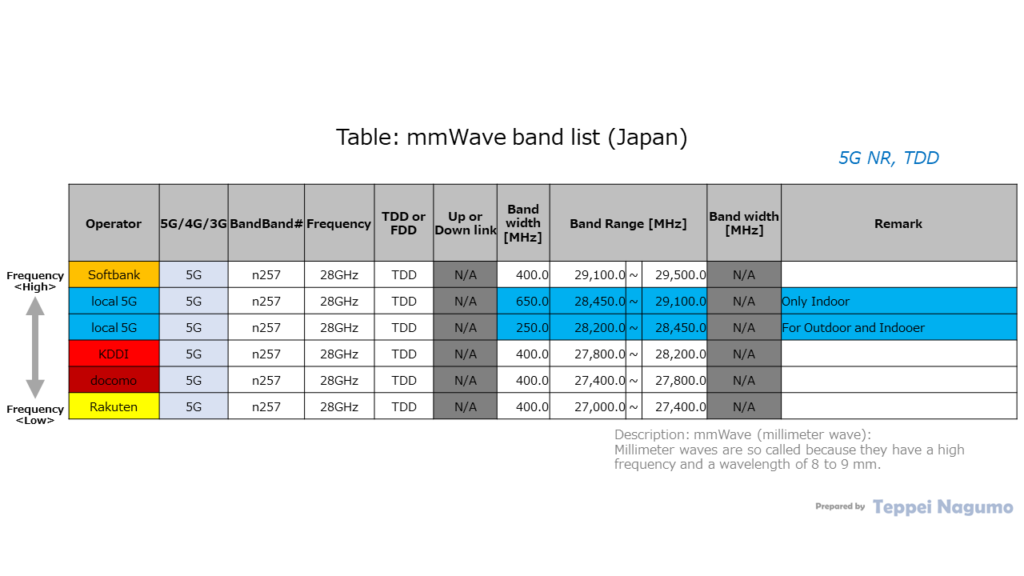
(n257: 28GHz band) frequency allocation diagram (including local 5G)
400MHz bandwidth is allocated to each mobile carrier (Docomo, KDDI, Softbank, Rakuten). The 28GHz band (n257) has also been allocated for local 5G. (See figure below)
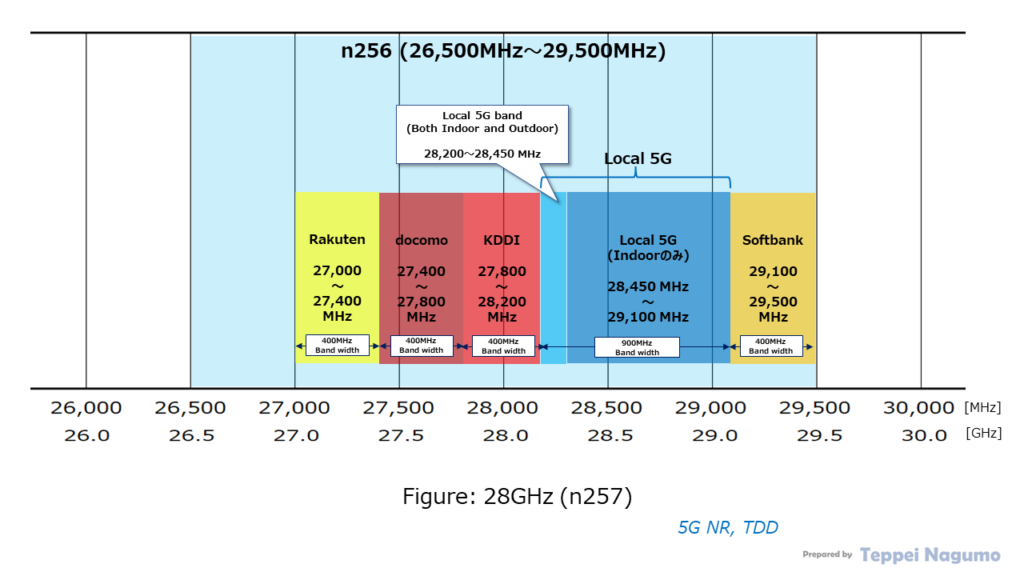
Frequency allocation status details for Sub6 (n79: 4.5GHz band, n77/n78: 3.7GH band)
Sub6 (n79: 4.5GHz band, n77/n78: 3.7GH band) frequency allocation list (including local 5G)
The Sub6 3.7GHz band (n77/n78) is the main band for 5G NR services. The 4.5GHz band (n79) is also allocated as a frequency band for local 5G.
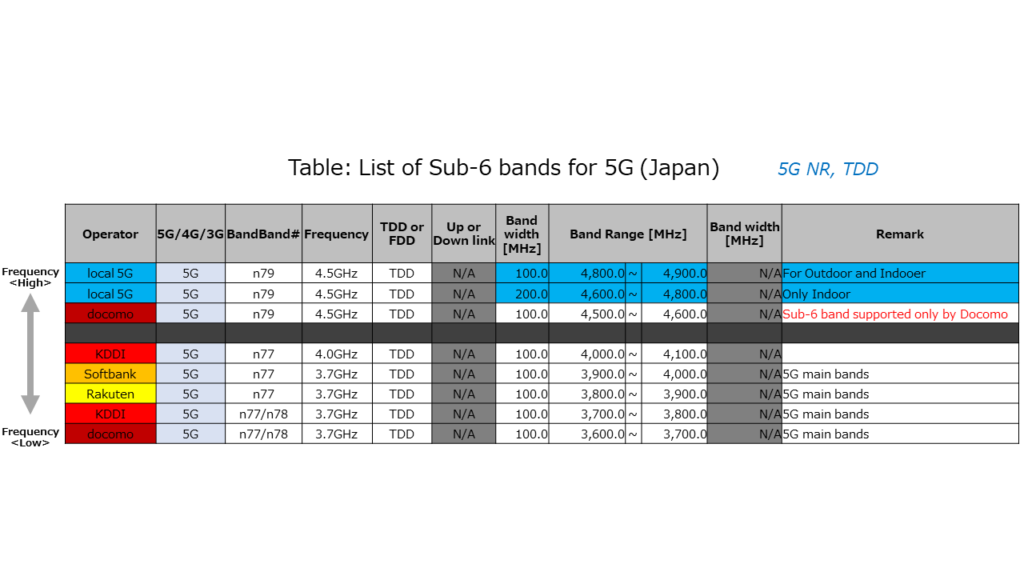
Sub6 (n79: 4.5GHz band) frequency allocation diagram (including local 5G)
The 4.5GHz band (n79) is mainly the local 5 frequency band. This frequency band (n79) is a Japan-specific frequency band that is not expected to be used much as 5G NR (5G New Radio) worldwide (other than Japan, only China uses it). However, unlike the 5G 3.7GHz band (n77/n78), it is less susceptible to interference from satellite communications. Therefore, NTT Docomo is actively expanding its 5G area in this 4.5GHz band (n79).
Frequencies for Local 5G are divided into “frequency bands dedicated to indoor use (for indoor area coverage)” and “frequency bands that can be used both outdoors and indoors.” (See figure below)
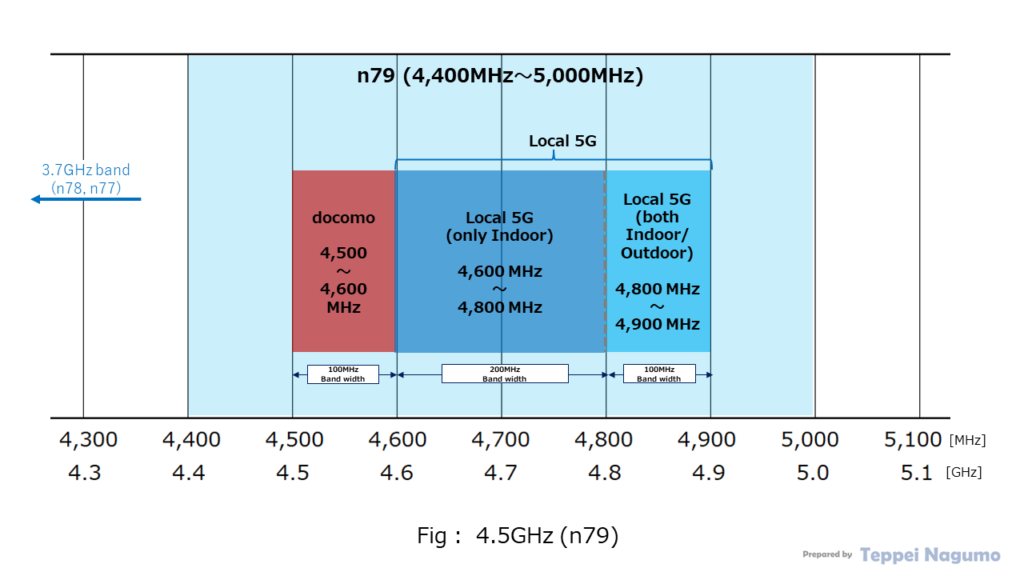
Sub6 (n77/n78: 3.7GHz band) frequency allocation diagram (including local 5G)
n77 includes n78. In the 3.7GHz band (n77/n78), all Japanese mobile carriers (Docomo, KDDI, Softbank, Rakuten) have been allocated frequencies of 100MHz each for 5G NR.
KDDI is assigned a frequency of 100MHz+100MHz with a total width of 200MHz. (See figure below)
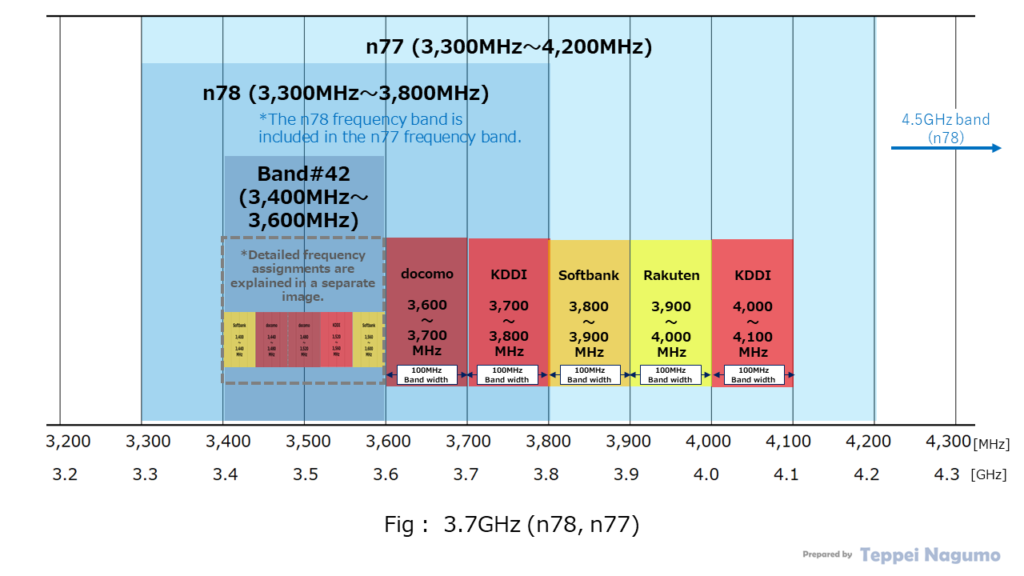
Frequency allocation status details for Sub6 (Band 42: 3.5GHz band, Band 41: 2.5GHz band, Band 40: 2.3GHz band)
Sub6 (band 42: 3.5GHz band, band 41: 2.5GHz band, band 40: 2.3GHz band) frequency allocation list (including WBA)
Band 42 (3.5GHz band) and Band 41 (2.5GHz band) are bands originally allocated for 4G LTE (TDD). The frequency width is also relatively wide.
This band also includes the band for the regional broadband mobile radio access system WBA (Broadband Wireless Access). The BWA system is a wireless system aimed at improving local public services.
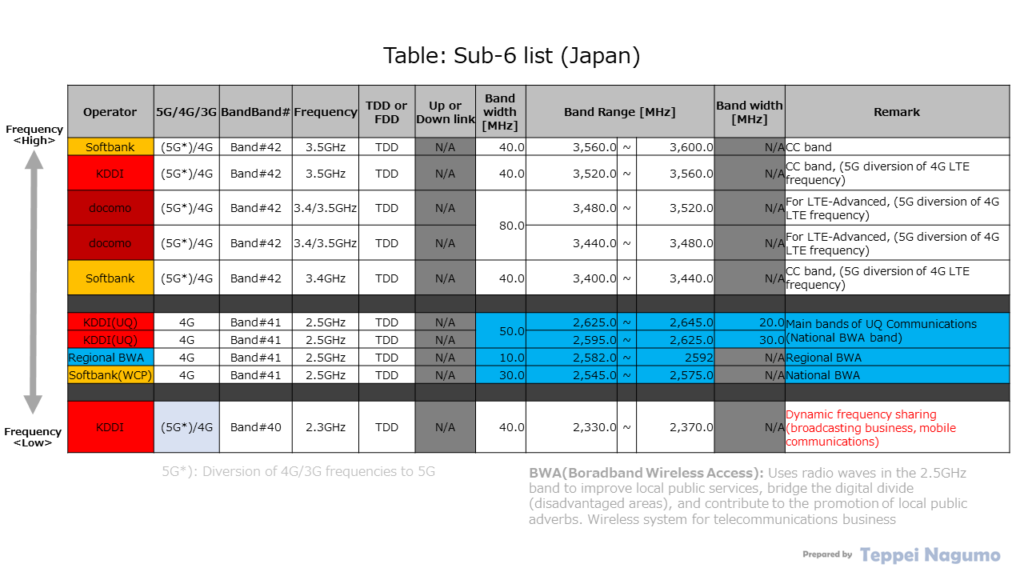
Sub6 (band 42: 3.5GHz band) frequency allocation diagram
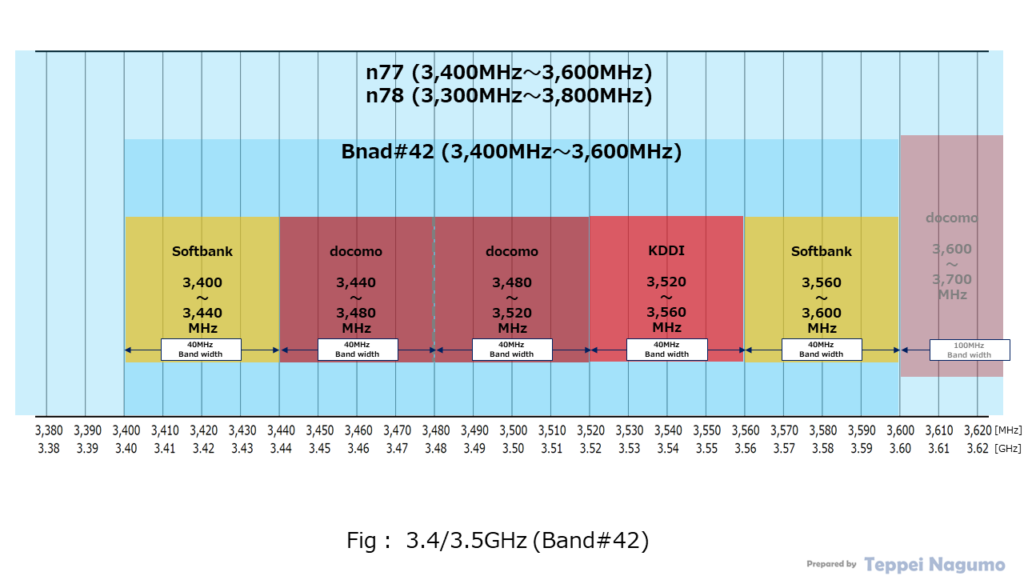
The 3.5GHz band (band 42) is a frequency that is used to achieve high communication speeds by using a technology called carrier aggregation (CC) at the same time as other frequency bands.
The 3.5GHz band (band 42) is a frequency allocated for 4G LTE (TDD communication), but it is a frequency band that is actively being converted to 5G NR.
Sub6 (band 41: 2.5GHz band) frequency allocation diagram (including WBA)
The BWA (Broadband Wireless Access) system is divided into national BWA and regional BWA.
- Nationwide BWA: KDDI (UQ Communications) owns frequencies in 50MHz width, and Softbank (Wireless City Planning) owns frequencies in 30MHz width. The service is already available nationwide.
- Regional BWA: 2.5GHz (band 41) frequency is allocated to each region in Japan. It is used for various purposes depending on the region.
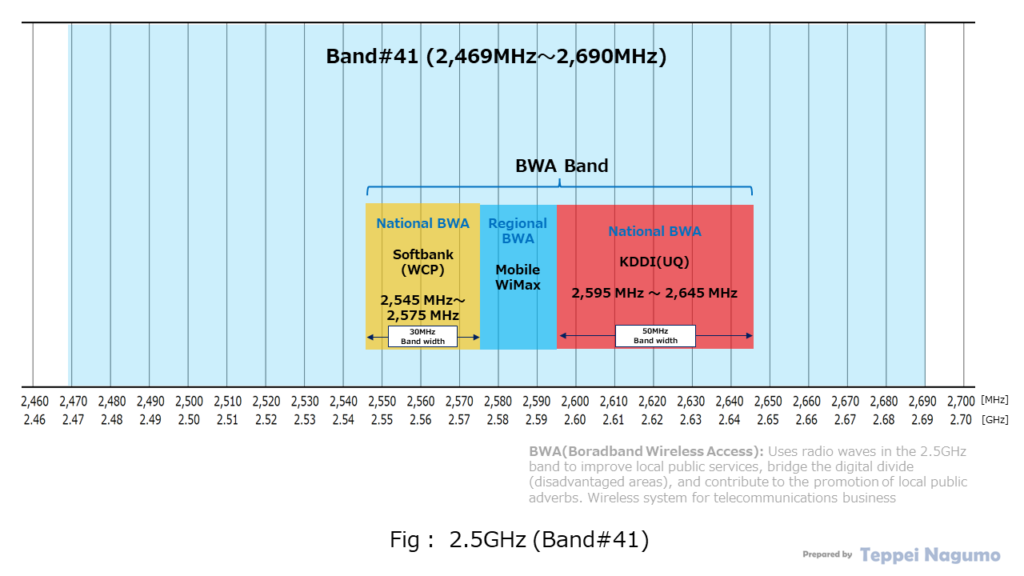
Sub6 (band 40, n40: 2.3GHz band) frequency allocation diagram
This band is used globally for mobile phones, and is supported by many devices (smartphones). In May 2022, the 2.3GHz frequency was allocated to KDDI. KDDI began operation in the 2.3GHz band in July 2023.
This band, 2.3GHz, will be dynamically shared between the existing “broadcasting business” and “KDDI’s mobile communications”. The existing broadcasting business is used by broadcasters to transmit broadcast program materials for news program relays, marathon relays, etc., and does not emit radio waves on a regular basis.
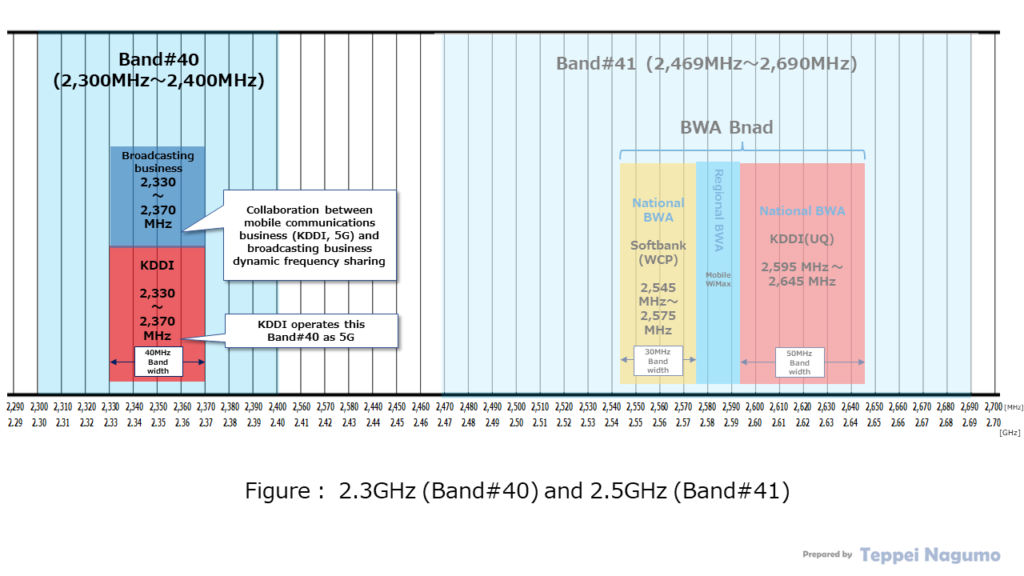
Frequency allocation status details for low band (band 1: 2.0GHz band, band 3/9: 1.7GHz band, band 21/11: 1.5GHz band)
Frequency allocation list for low band (band 1: 2.0GHz band, band 3/9: 1.7GHz band, band 21/11: 1.5GHz band)
Frequencies below 2.0GHz band (band 1) are FDD (Frequency Division Duplex) systems. FDD systems have separate frequencies allocated for downlink and uplink. (See table below)
Also, bands with frequencies higher than this 2.0GHz band (band 1) are TDD (Time Division Duplex) systems.
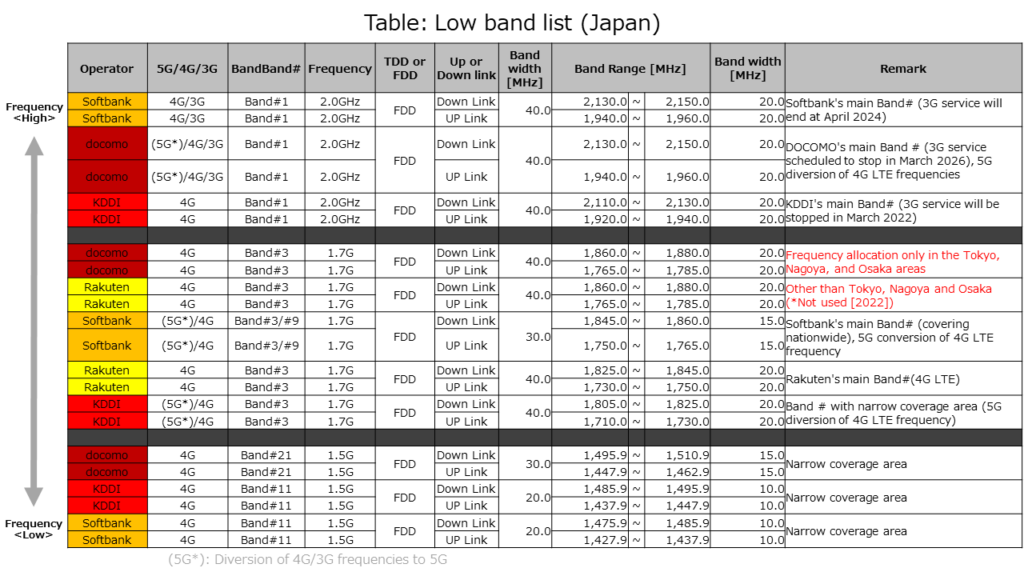
Low band (band 1: 2.0GHz band) frequency allocation diagram
2.0GHz (band 1) is a frequency band that has been widely used in conventional 3G mobile communication systems. This is a frequency widely used as the main band for 4G LTE.
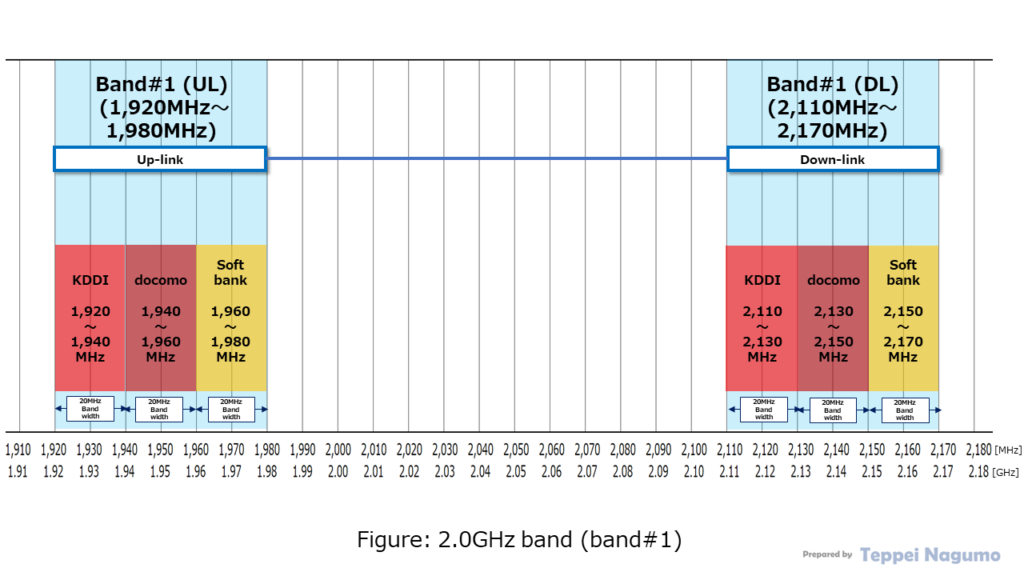
Low band (band 3/9: 1.7GHz band) frequency allocation diagram
Band 9 is included in Band 3. All mobile carriers (Docomo, KDDI, Softbank, Rakuten) are allocated frequencies in the 1.7GHz band. (See figure below)
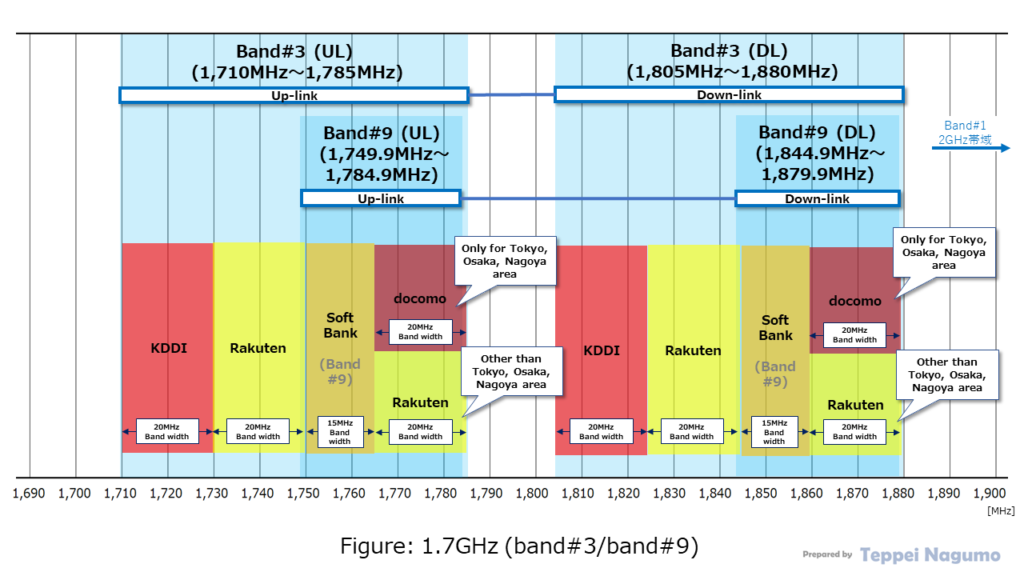
The frequencies of 1,765MHz to 1,785MHz (uplink) and 1,860MHz to 1,880MHz (downlink) in the 1.7GHz band (band 3/9) are allocated to Docomo and Rakuten. Tokyo, Nagoya, and Osaka areas are covered by Docomo, and the rest of the area is covered by Rakuten. (See figure below)
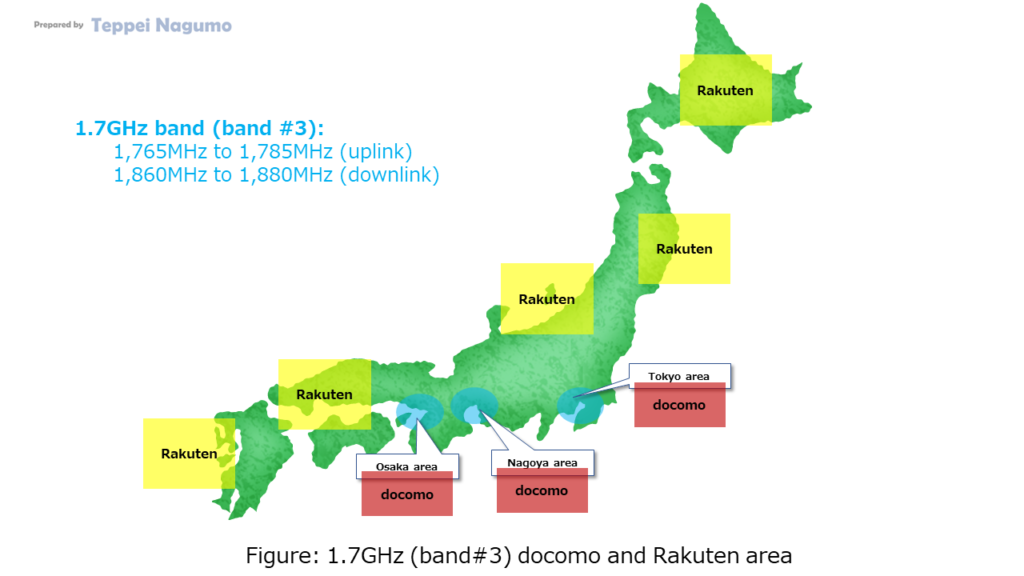
Docomo uses this band to provide services in the Tokyo, Nagoya, and Osaka regions.
On the other hand, Rakuten does not use this frequency band. Rakuten is expanding its 4G LTE service area across Japan at frequencies from 1,730MHz to 1,750MHz (uplink) and from 1,825MHz to 1,845MHz (downlink) in the lower frequency (band 3) of the 1.7GHz band.
Low band (band 11/21: 1.5GHz band) frequency allocation diagram
In the 1.5GHz band, band 11 and band 21 are adjacent to each other. This band is assigned frequencies to Docomo, KDDI, and Softbank (see the diagram below)
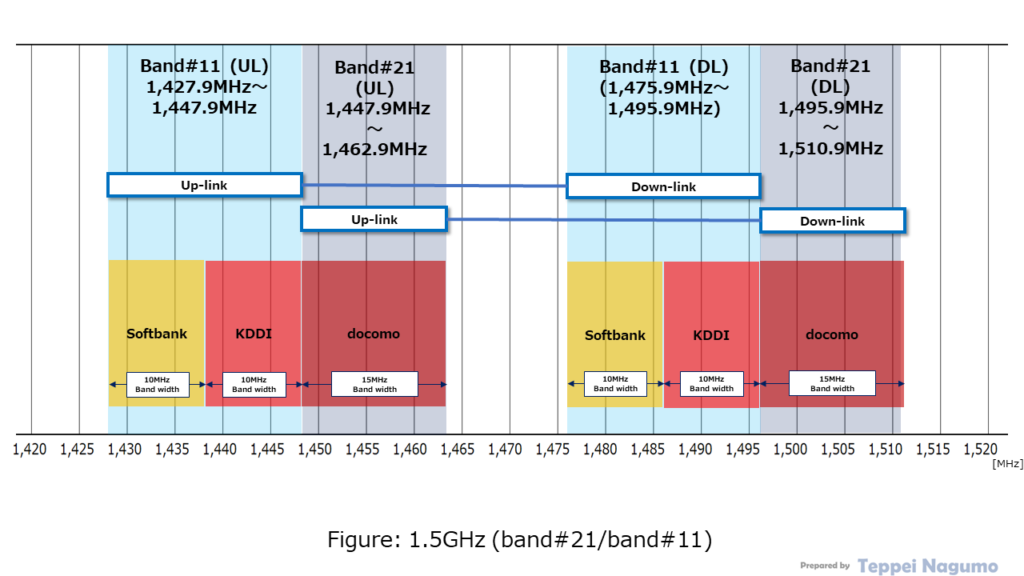
Frequency allocation status details for platinum band (band 8: 900MHz band, band 26/19: 800MHz band, band 28: 700MHz band)
Frequency allocation list for platinum band (band 8: 900MHz band, band 26/19: 800MHz band, band 28: 700MHz band)
The platinum band is the lowest frequency band in mobile communications. Platinum band radio waves have the following characteristics:
- [Advantages] Easy to get behind buildings and obstacles (good radio waves)
- [Advantage] Easily penetrates building walls and concrete (good radio waves)
- [Advantage] Easily penetrates building walls and concrete (good radio waves)
- [Disadvantages] The bandwidth that can be secured is narrow, and high communication speeds (throughput) cannot be expected.
Due to the above advantages, platinum band is a very valuable band for securing mobile phone service area. Radio waves in this band have been widely used for 3G services, but with the service stop of 3G, they will be used as radio waves for 5G NR.
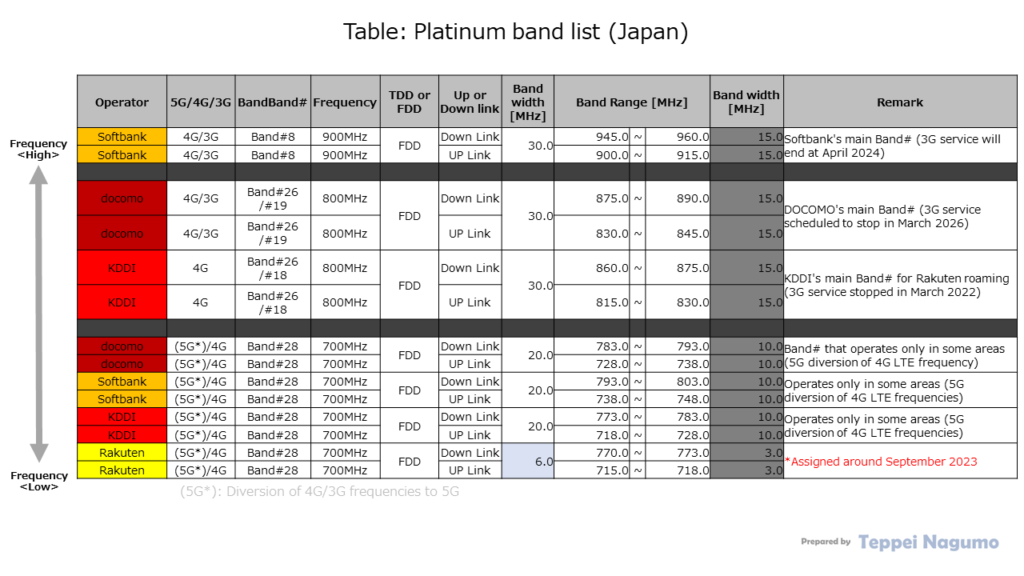
Platinum band (band 8: 900MHz band, band 26/19/18: 800MHz band, band 28: 700MHz band) frequency allocation diagram
The diagram below shows the relationship between the platinum band frequency bands allocated to Japanese mobile carriers (Docomo, KDDI, Softbank, and Rakuten).
The diagram below shows the exact bands of mobile carriers (Docomo, KDDI, Softbank, Rakuten) allocated to Japan’s platinum band in the 900MHz, 800MHz, and 700MHz bands. (See figure below)
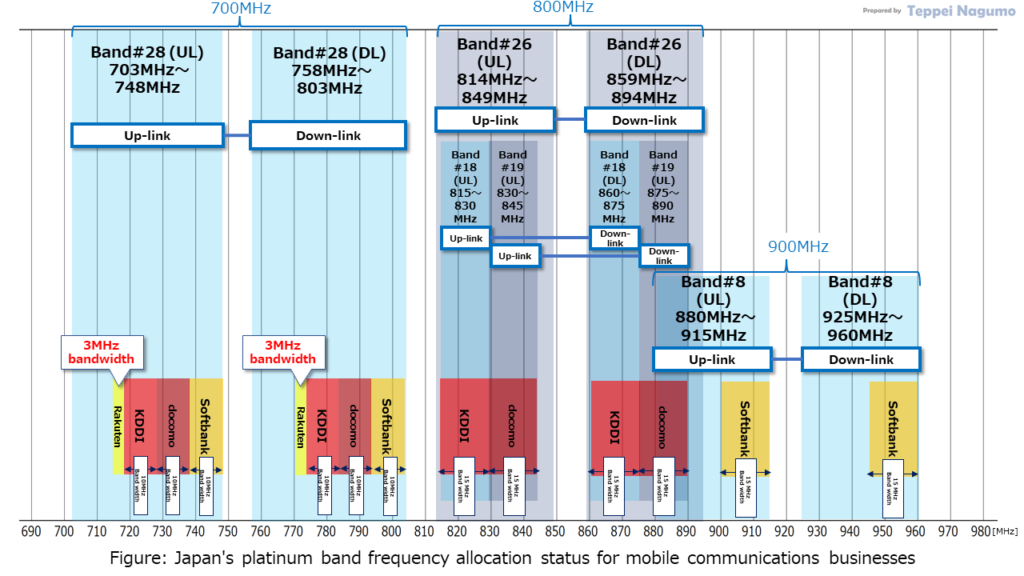
Platinum band (band 8: 900MHz band) frequency allocation diagram
In the 900MHz band (band 8), SoftBank is allocated a 15MHz bandwidth x 2 (uplink, downlink). (See figure below)
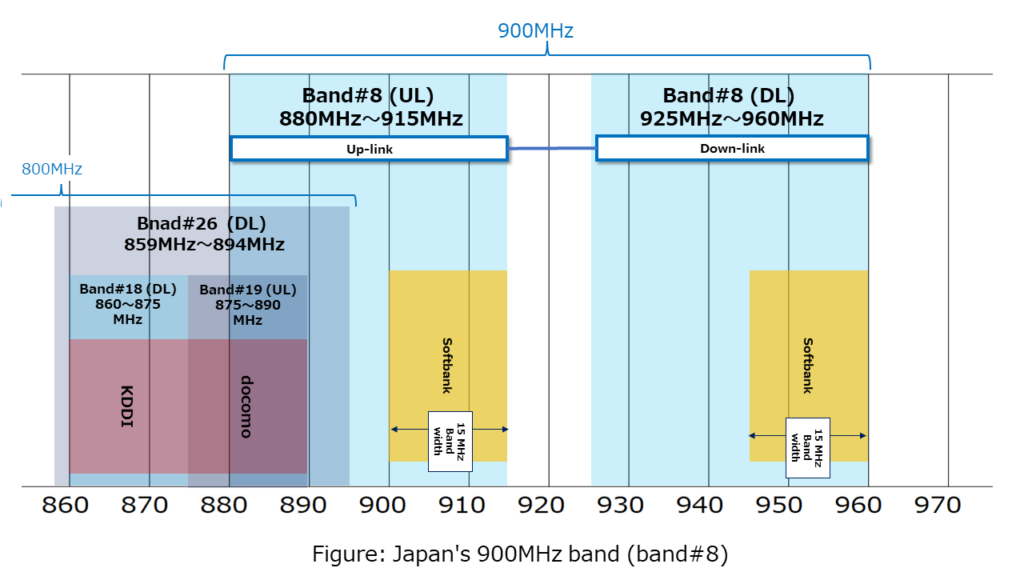
Platinum band (band 26/19/18: 800MHz band) frequency allocation diagram
Docomo and KDDI frequencies are assigned to the 800MHz band (band 26).
Bands 18 and 19 of the 800MHz band are included in band 26 (see diagram below)
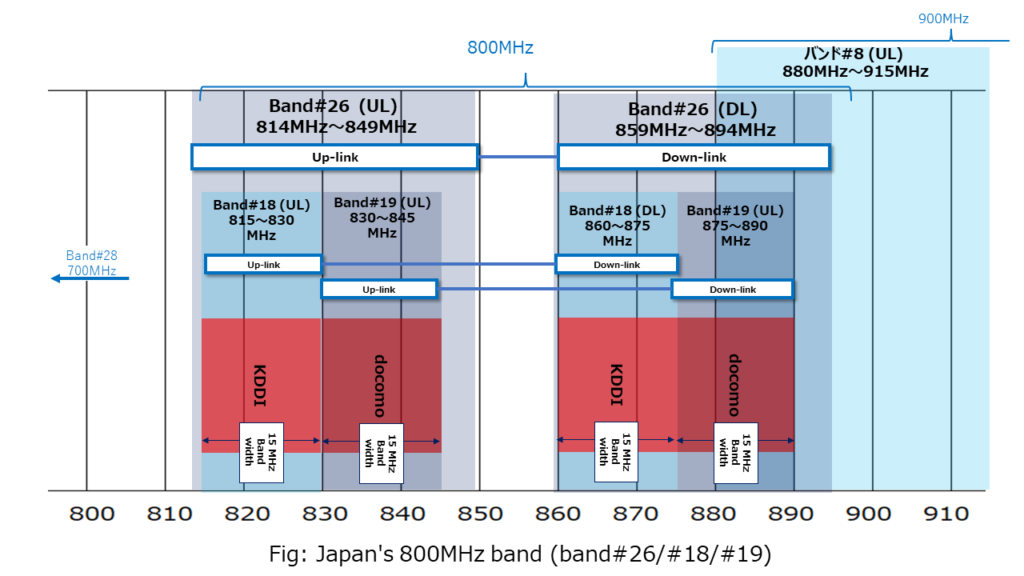
Platinum band (band 28: 700MHz band) frequency allocation diagram
The 700MHz band (band 28) is allocated to Docomo, KDDI, and Softbank. Please refer to the diagram below for each adjacency relationship and bandwidth.
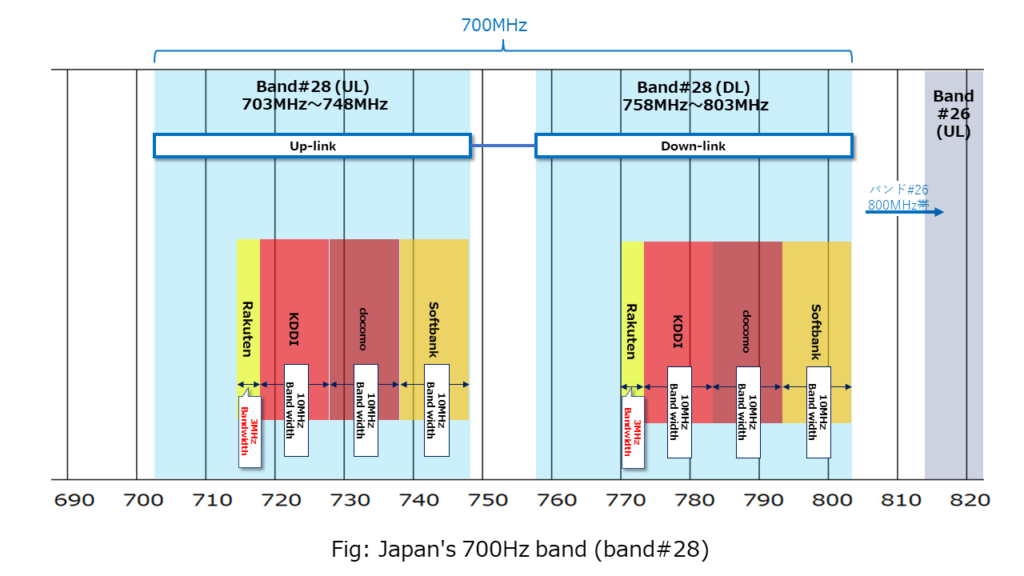
Rakuten’s frequency was assigned to this 700MHz band (uplink and downlink each) with 3MHz bandwidth. I have already listed Rakuten’s band in the diagram above. Please refer to the blog post below for details regarding the allocation of platinum bands to Rakuten.
For more information about Rakuten’s Platinum Band, please refer to the blog post (Japanese version) below.
Summary
In this blog post, we organized and explained the radio frequencies (bands) assigned to mobile network operators (MNOs: Mobile Network Operators). We also explained the frequencies of each mobile phone carrier: Docomo, KDDI, Softbank, and Rakuten.
In this blog post, we have explained in an easy-to-understand manner the exact frequencies held by each mobile network operator (MNO: Mobile Network Operator) in Japan and their adjacency relationships.
For detailed information on the number of base stations of Japanese mobile communication operators, please refer to the blog post below.
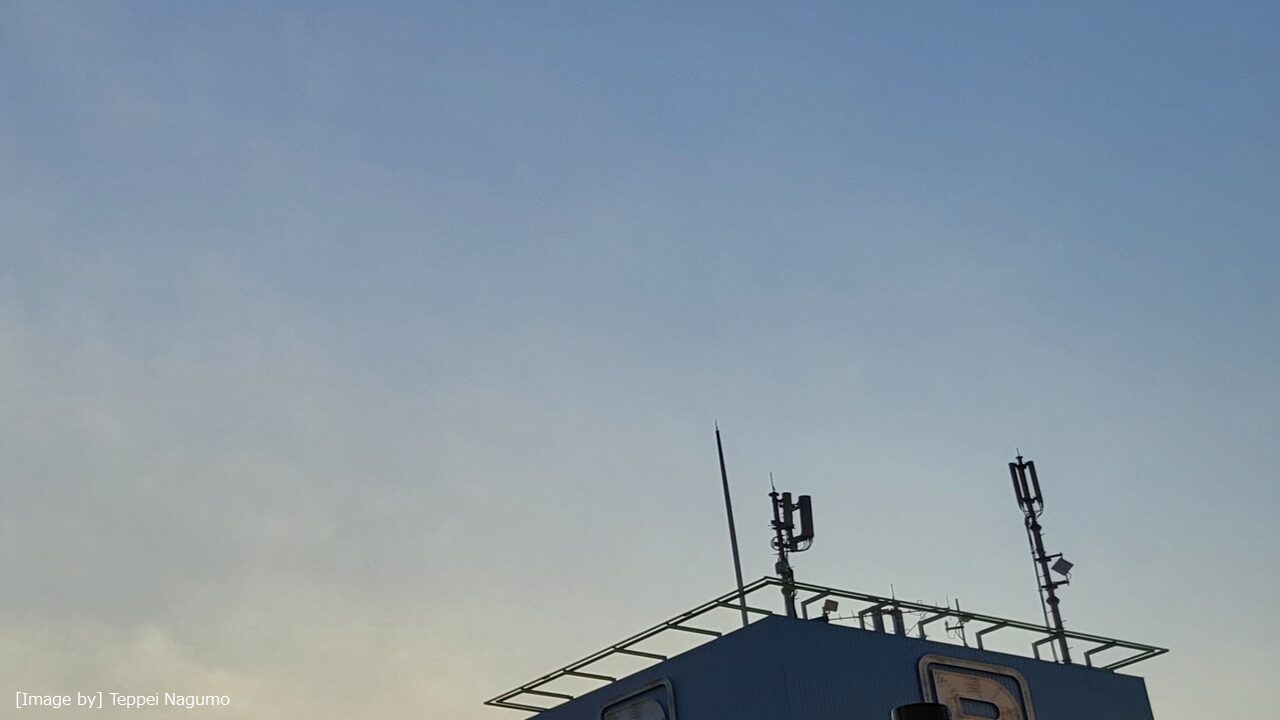




コメント